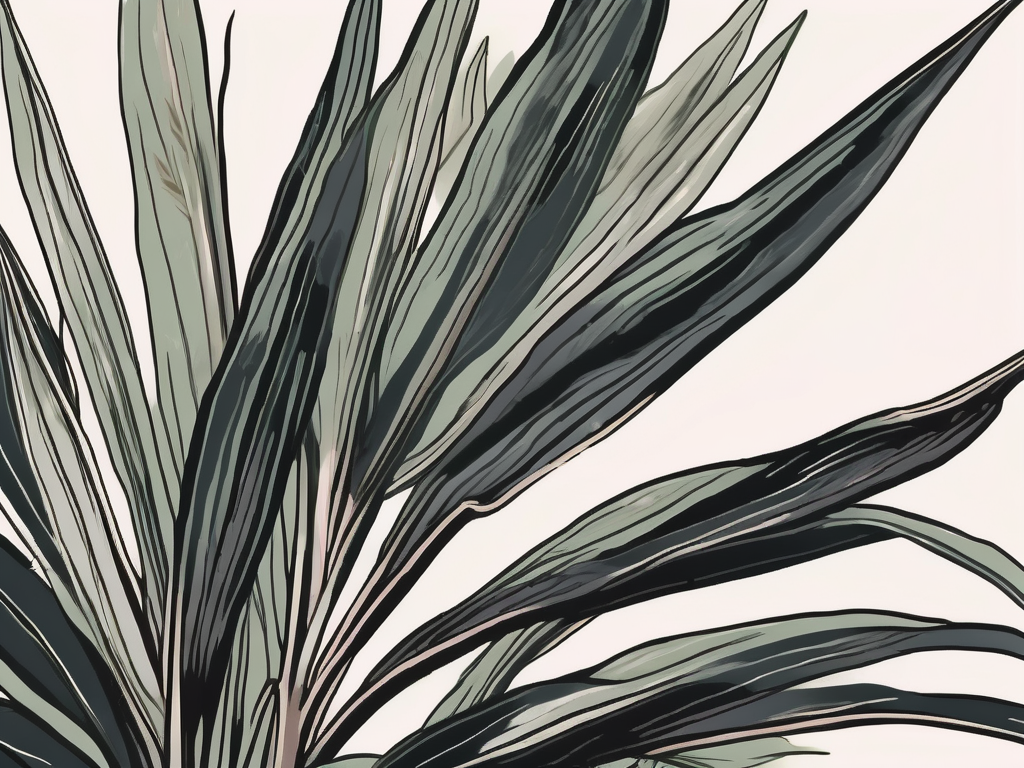
You've just brought home a beautiful Cordyline, and everything seems perfect until you notice something alarming: the leaves are turning black. Panic might set in, but don't worry! This is a common issue many plant parents face, and it’s often easier to address than you might think.
In this article, we'll go through the various reasons why Cordyline leaves might be turning black, offering practical solutions along the way. We'll also share a few tips on maintaining vibrant, healthy plants and how to incorporate them into your home decor for that extra bit of green magic.
Understanding Your Cordyline: The Basics
Before diving into the potential problems, it's crucial to understand what Cordylines are all about. These plants are known for their striking foliage, which comes in a multitude of colors ranging from greens to deep purples and reds. They're a favorite among plant lovers due to their ability to add a tropical vibe to any room.
Cordylines are pretty hardy, but they do have some specific needs. They're typically happiest in bright, indirect sunlight and prefer to dry out a bit between waterings. Knowing these basic requirements can help you pinpoint any deviations that might be causing those black leaves.
Water Woes: Overwatering and Underwatering
One of the most common reasons for black leaves is incorrect watering. Overwatering is a frequent culprit, leading to root rot, which in turn causes leaves to turn black. If your Cordyline is sitting in waterlogged soil, it's time to rethink your watering schedule.
- Overwatering: Ensure your pot has adequate drainage. If the soil feels soggy, let it dry out completely before watering again.
- Underwatering: On the other hand, if the leaves feel crispy and dry, your plant might be thirsty. Water it thoroughly, but make sure any excess water drains away.
A simple way to check moisture levels is to stick your finger into the soil about an inch deep. If it feels dry, it's time to water.
Lighting Issues: Too Much or Too Little?
Cordylines love light, but too much direct sunlight can scorch the leaves, leading to blackening. Conversely, too little light can cause the plant to weaken, making it more susceptible to other issues.
Try placing your Cordyline in a spot where it can enjoy bright, filtered light. If you notice the leaves turning black, and your plant sits in a sunbeam for most of the day, consider moving it a bit further from the window.
Temperature and Humidity: Finding the Right Balance
Cordylines originate from tropical regions, so they thrive in warm, humid conditions. If your home is too cold or dry, it might be stressing your plant, leading to black leaves.
- Temperature: Keep your plant in a room where the temperature stays between 65-80°F (18-27°C).
- Humidity: If possible, increase humidity around your Cordyline by misting it regularly or placing it near a humidifier.
Avoid placing your plant near drafts or heating vents, as these can cause sudden changes in temperature that the plant won't appreciate.
Pest Problems: Tiny Invaders
No one likes dealing with pests, but they are a part of plant care. Aphids, spider mites, and mealybugs can all make your Cordyline's leaves turn black as they feed on the sap.
If you suspect pests, inspect your plant closely. Look for small insects on the leaves or webbing. Treat infestations with insecticidal soap or neem oil, and isolate the affected plant to prevent spreading.
Nutrient Deficiencies: Feeding Your Cordyline
Just like us, plants need a balanced diet to thrive. A lack of essential nutrients can lead to black leaves. Your Cordyline might be missing key nutrients like nitrogen, phosphorus, or potassium.
- Fertilizing: Use a balanced, water-soluble fertilizer during the growing season (spring and summer).
- Soil Health: Ensure the soil is rich and well-draining to provide the necessary nutrients.
Remember, over-fertilization can be just as harmful as under-fertilization, so follow the instructions on the fertilizer package carefully.
Soil Quality: The Foundation of Plant Health
Speaking of soil, it's the foundation of your plant's health. Cordylines prefer well-draining soil. If the soil becomes too compacted or waterlogged, it can suffocate the roots, leading to blackening leaves.
- Soil Mix: Use a mix that combines potting soil with perlite or sand for good drainage.
- Repotting: Consider repotting your Cordyline every couple of years to refresh the soil and give the roots more room to grow.
Healthy roots mean a healthy plant, so paying attention to the soil is crucial.
Stress Factors: Moving and Repotting
Plants, like people, can get stressed from big changes. If you've recently moved your Cordyline to a new location or repotted it, this could be the cause of those black leaves.
Give your plant time to adjust to its new environment. Keep its conditions as stable as possible, and avoid making multiple changes all at once.
Decorating with Cordylines: Bringing Color to Your Home
Cordylines are not just about care; they're also about beauty. With their vibrant foliage, they can be a stunning addition to your home decor.
- Placement: Use Cordylines to brighten up a dull corner or add a splash of color to a neutral room.
- Containers: Choose stylish pots that complement your interior design.
With the right care and placement, your Cordylines can become a focal point in your home, turning heads and bringing smiles.
Final Thoughts
In summary, Cordyline leaves turning black can be a sign of various issues, from watering mishaps to pest invasions. By understanding the specific needs of your plant and making necessary adjustments, you can help your Cordyline thrive and maintain its stunning appearance.
At Cafe Planta, we're passionate about helping you cultivate your plant paradise. If you have any questions or need advice, feel free to email us or reach out on Instagram. Whether you're a seasoned plant parent or just starting your journey, we're here to support you every step of the way.












